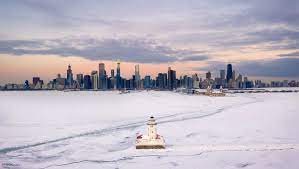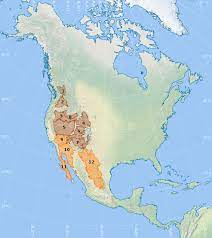If you want to know What is the Climate of USA? then, you are at right place. The climate of the United States is highly diverse and varies significantly across its vast expanse due to its geographic location, topography, and proximity to different bodies of water. This diversity results in a wide range of climatic conditions, influencing everything from temperature patterns to precipitation levels. The United States experiences a variety of climatic zones, each with its own unique characteristics.

Continental Climate: Much of the interior of the United States, particularly in the northern and central regions, features a continental climate. This type of climate is characterized by distinct seasons, with hot summers and cold winters. Annual temperature variations can be significant, and temperature extremes are common. Cities like Chicago, Minneapolis, and Denver exemplify this continental climate.


Marine Influence: Coastal regions, especially along the Atlantic and Pacific coasts, experience a maritime climate. These areas tend to have milder and more moderate temperature ranges compared to inland regions. The presence of large bodies of water, such as the Atlantic Ocean and the Pacific Ocean, helps to moderate temperatures and reduce temperature extremes. Cities like Seattle and San Francisco showcase this maritime influence.

Desert and Arid Climates
The southwestern United States, including states like Arizona, New Mexico, and parts of California, exhibit desert and arid climates. These areas are characterized by low rainfall, high temperatures, and significant daily temperature fluctuations between day and night.

Mountain Climate: Mountainous regions, such as the Rocky Mountains and the Sierra Nevada, have unique climate patterns influenced by elevation. As elevation increases, temperatures generally decrease, leading to cooler conditions at higher altitudes. These areas can experience heavy snowfall in winter and cooler temperatures even during the summer months.
Tropical and Subtropical Climates: Parts of southern Florida, Hawaii, and the U.S. territories in the Caribbean and the Pacific Ocean have tropical and subtropical climates. These regions typically feature warm to hot temperatures year-round, along with high humidity levels and a pronounced wet season during certain months.
Polar Climate: Alaska, particularly its northern regions, experiences a polar climate characterized by extremely cold temperatures and long, harsh winters. The Arctic Circle crosses into Alaska, resulting in periods of continuous darkness during the winter and continuous daylight during the summer.
Humid Continental Climate: The northeastern United States, including cities like New York and Boston, falls under a humid continental climate category. This area experiences distinct seasons with warm to hot summers and cold winters, as well as a moderate amount of precipitation throughout the year.
What is the Climate of USA as per Koppen Scheme?
Classification of Climate of the United States based on Koeppen Climatic Classification Scheme
The Koppen climate classification scheme, a widely recognized system for categorizing climates based on temperature and precipitation patterns, offers insight into the varied climatic conditions found across this vast land. Lets apply it to classify the climate of the USA.
1. Boreal and Subarctic Climates (Dfc, Dfb): The northernmost reaches of the United States, including the rugged landscapes of Alaska, are characterized by Boreal and Subarctic climates. These regions, marked by cold winters and relatively cool summers, are represented by classifications Dfc (Subarctic) and Dfb (Humid Continental with Cold Winters). Places like Fairbanks, Alaska, experience harsh winters in the Dfc zone, while Fargo, North Dakota, showcases a Dfb climate with distinct seasonal variations.
2. Warm Summer Continental or Hemiboreal Climates (Dfa, Dfb): Stretching across the central and eastern parts of the country, the Warm Summer Continental or Hemiboreal climates offer warm to hot summers and cold winters. Iconic cities like Chicago, Illinois, exemplify the Dfa classification, while Minneapolis, Minnesota, embodies the Dfb climate, boasting pleasant summers and distinctive winter experiences.
3. Hot Summer Continental Climates (Dsa, Dsb): Venturing into the western interior, the Hot Summer Continental climates take center stage. Marked by hot summers and cold winters, these regions see less precipitation than their eastern counterparts. Omaha, Nebraska, falls under Dsa, while Rapid City, South Dakota, experiences a Dsb climate, characterized by its dry summers.
4. Warm Temperate or Microthermal Climates (Cfa, Cfb, Cwa, Cwb): From the southeastern coast to the western shores, Warm Temperate or Microthermal climates dominate, offering a spectrum of climatic experiences. Humid subtropical Cfa zones, like Atlanta, Georgia, feature mild winters and warm, muggy summers. In contrast, the marine west coast Cfb climate graces Seattle, Washington, with moderate temperatures year-round. Cities like New Orleans, Louisiana, and Los Angeles, California, exhibit the Cwa and Cwb classifications, respectively, each with unique precipitation and temperature patterns.
5. Arid and Semiarid Climates (BWh, BWk, BSk, BSh): The arid and semiarid climates prevail in the western interior and southwestern regions, showcasing low precipitation levels and distinct temperature patterns. Cities like Phoenix, Arizona, experience the scorching heat of the BWh hot desert climate, while Salt Lake City, Utah, resides in a BWk cold desert zone. Denver, Colorado, exemplifies the BSk cold steppe climate, while El Paso, Texas, endures the BSh hot steppe climate, characterized by its arid conditions.
6. Tropical Climates (Af): Tropical climates grace parts of Hawaii and the U.S. territories in the Caribbean and Pacific. Hilo, Hawaii, embodies the Af tropical rainforest classification, with consistently high temperatures and humidity levels.
7. Polar Climates (ET, EF): In the far reaches of the northernmost Alaskan territories, Polar climates are present. Barrow experiences the ET tundra climate, while the EF ice cap climate encompasses locations like Summit Camp in Greenland, an integral part of the United States.
It’s important to note that the USA’s diverse climate zones contribute to its varied ecosystems, agriculture patterns, and overall way of life across different regions of the country. The intricate interplay of geographic features and atmospheric conditions results in the rich tapestry of climates found within the United States.
Thanks for reading the article on What is the Climate of USA?